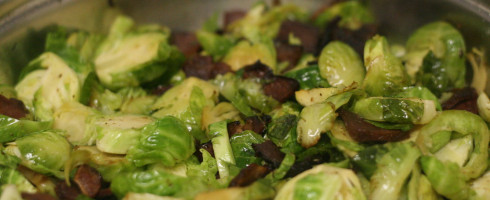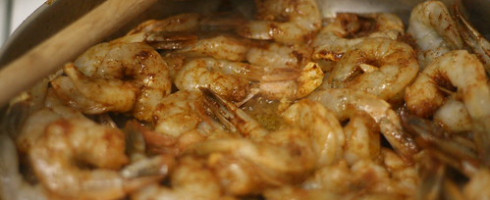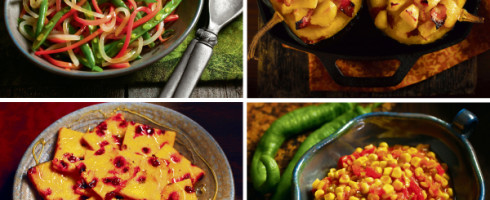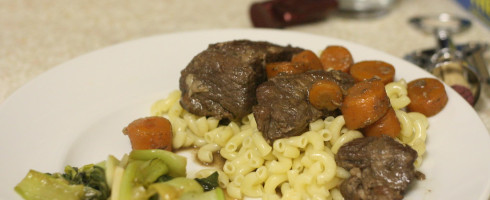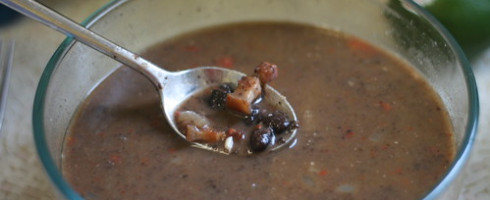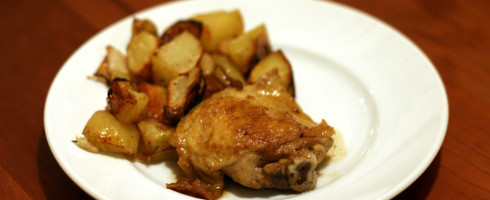Round Two: Bread Stuffing, Tweaked
24 Nov

Okay, that didn’t go so well. It’s okay. That’s why I made a stuffing ahead of time. Determined to make a phenomenal Thanksgiving stuffing, I dusted myself off and got back on the horse on Saturday, making a second stuffing. This one was for the purpose of getting the texture right–moist, but not mushy (the first one was like a plate of breadcrumbs, with turkey sausage).

Above is the stuffing before it went into the oven. I sauteed onions in equal parts oil and butter until soft, then added some herbs, the bread cubes (from Bread Alone, a hearty mix of whites and whole wheats) and a fair amount of stock and water until I had what I thought was the right consistency.
So this stuffing was markedly better. It was moist, though still not nearly as wet as I like it, and cooking it in my amazing new Staub dutch oven gave it an incredible crust on the bottom. But I still wasn’t sure about this stuffing. Even with more moisture, it didn’t taste like what I was used to, and to me, that’s the most important thing with Thanksgiving stuffing. Below, the stuffing after it came out of the oven (the cast iron gave it an incredible crust).
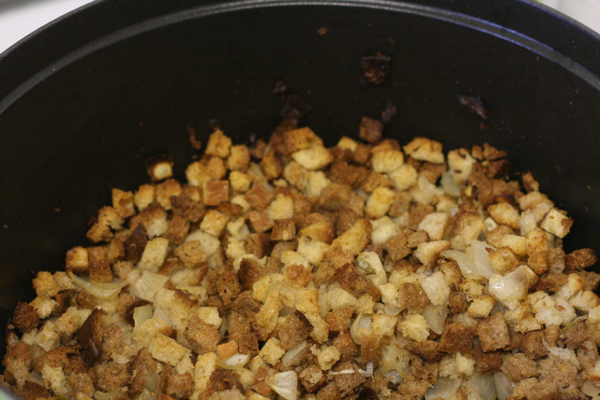
What exactly am I used to? Pepperidge Farm’s bag of stuffing, that’s what. Resting somewhere on the legitimacy scale between Stove Top and from-scratch stuffing, it’s real bread and a seasoning pack. And after reading this post on Serious Eats rounding up store bought stuffings, I feel reassured that I should stick with what I already know I like. I’m confident that the stuffing will still to be totally next level, because I’m taking the advice of the Serious Eats team and doctoring it up with the things I planned to put in my homemade stuffing (chief among them Dipaola Turkey Sausage from the Greenmarket, aka the best turkey sausage EVER). I’ll let you know how it goes after the big day.

